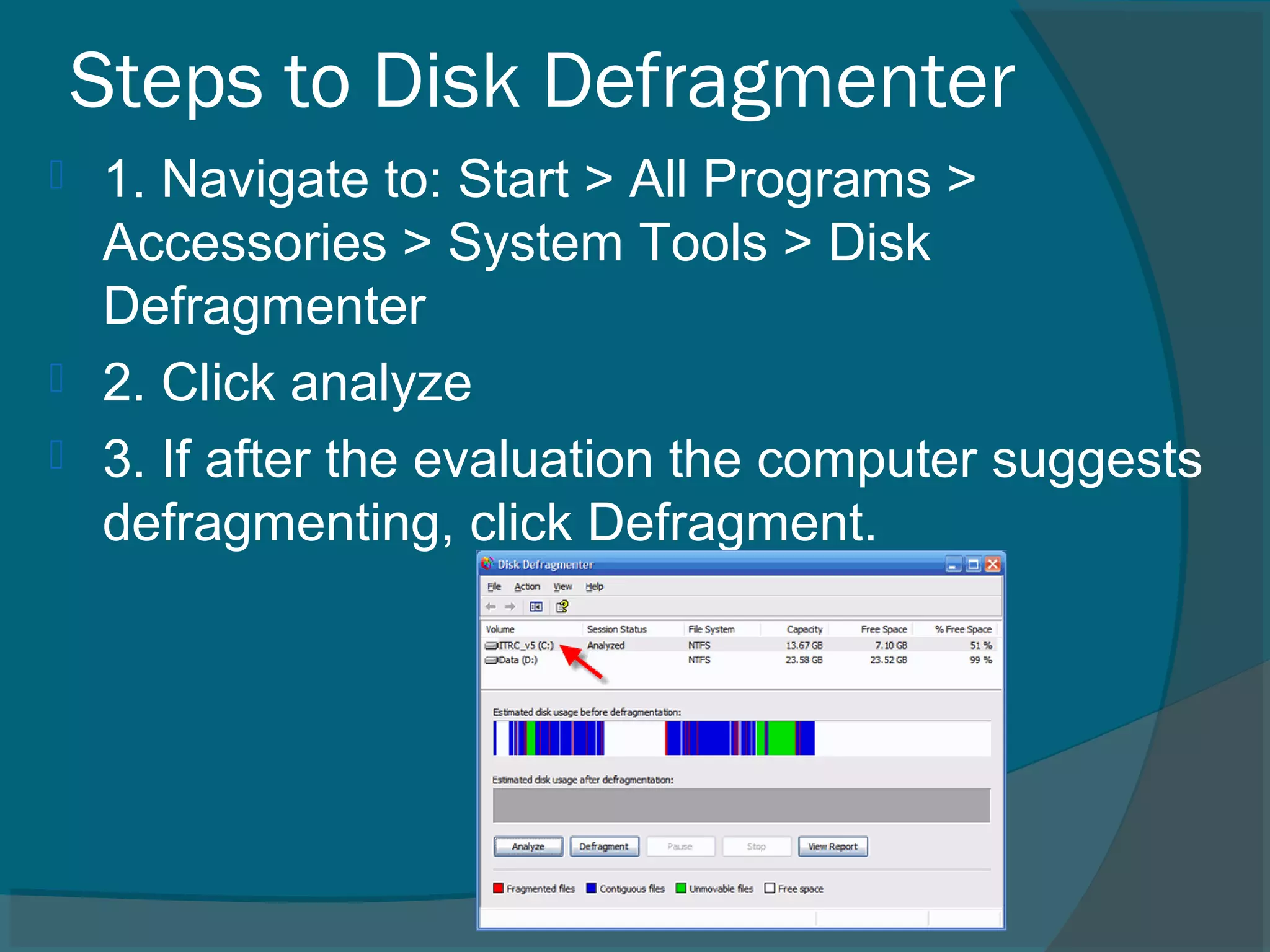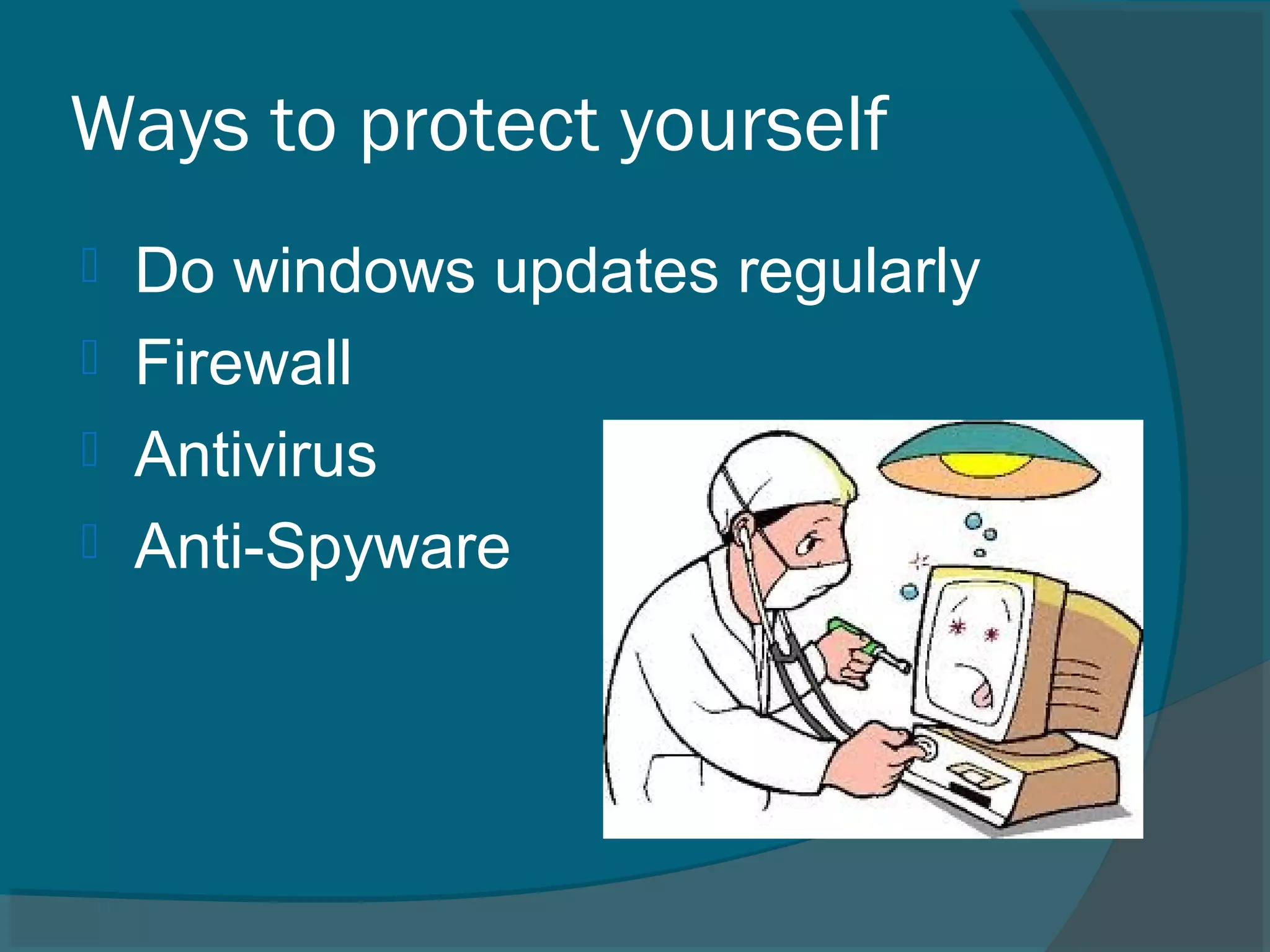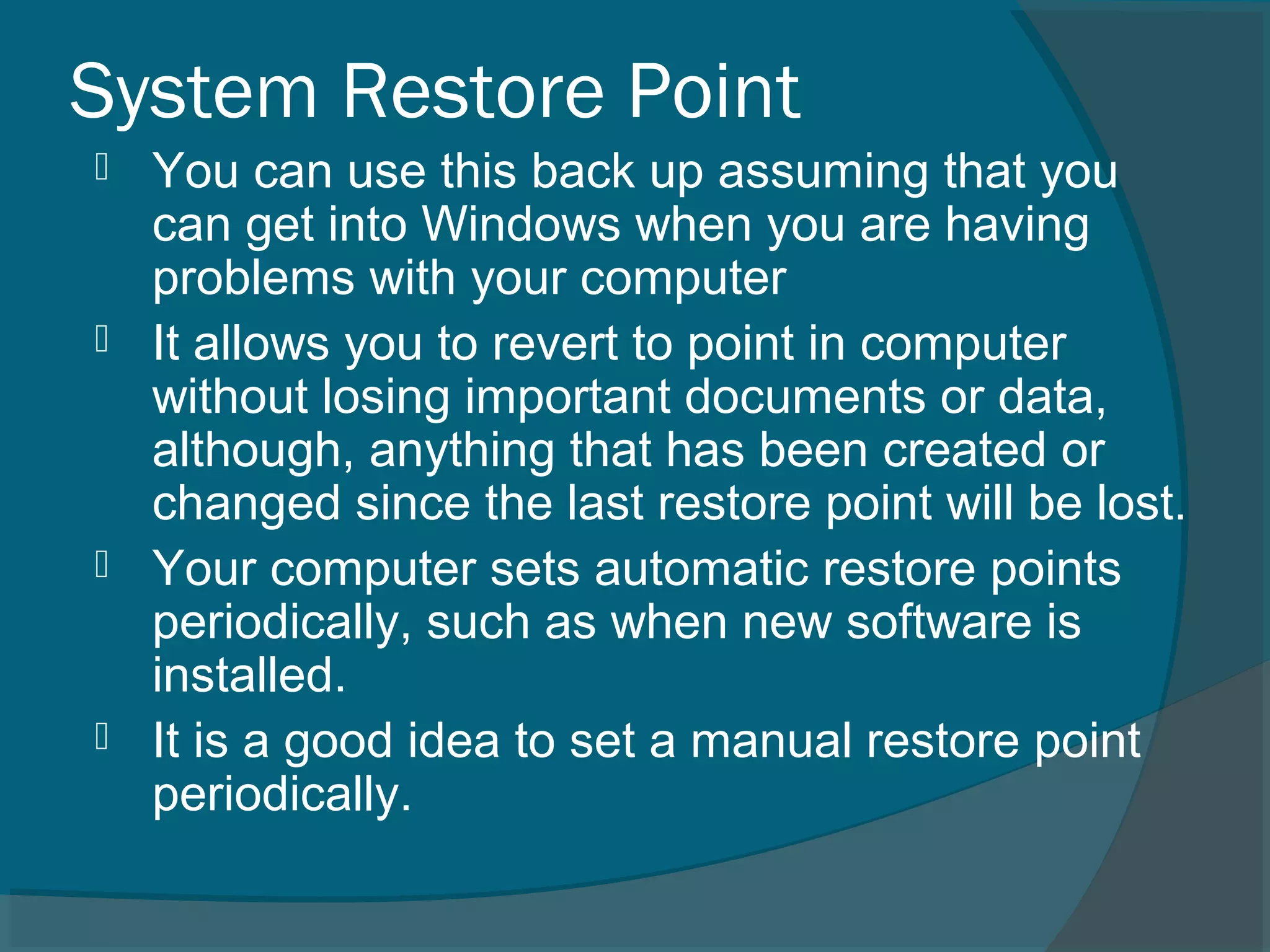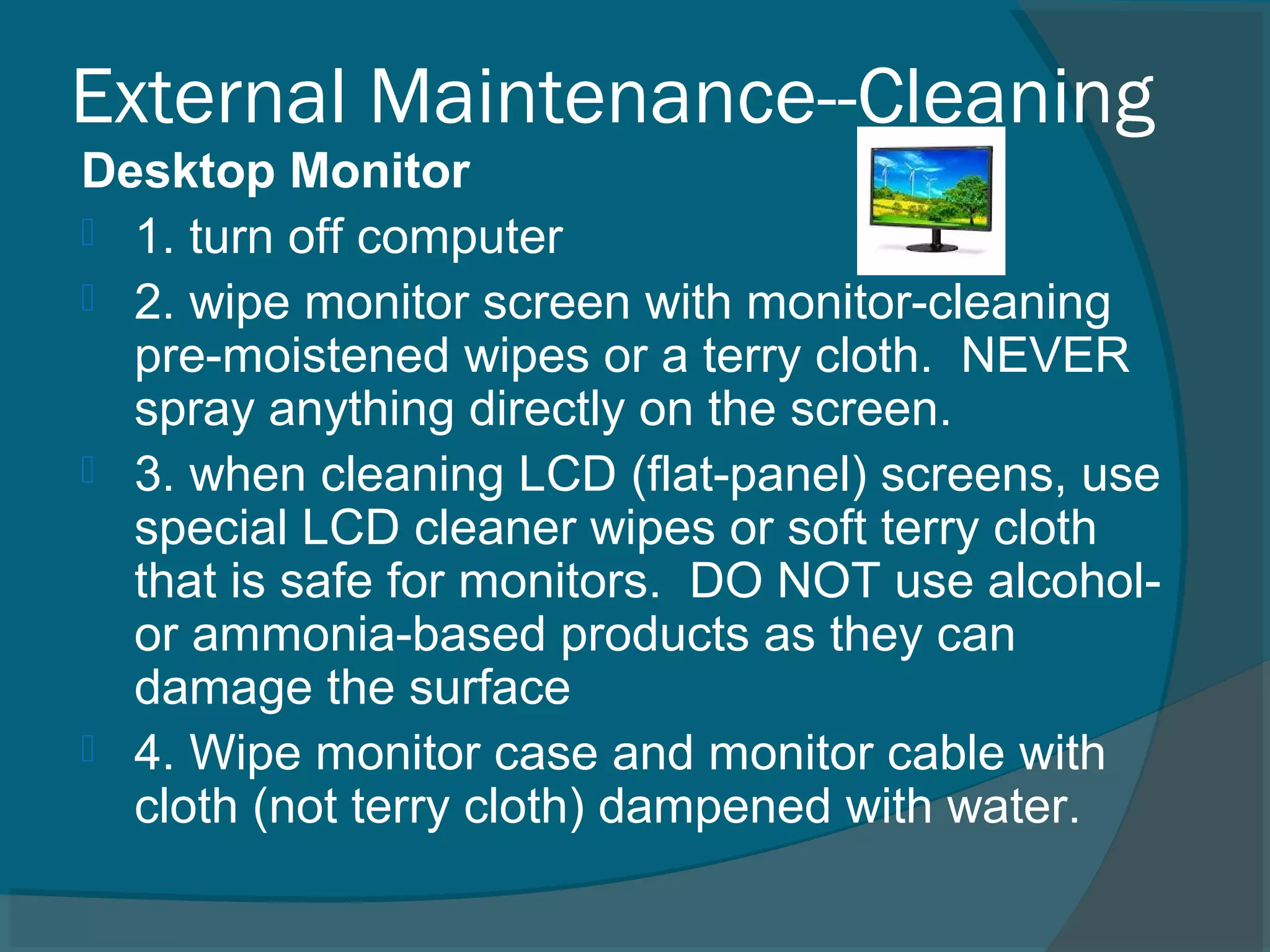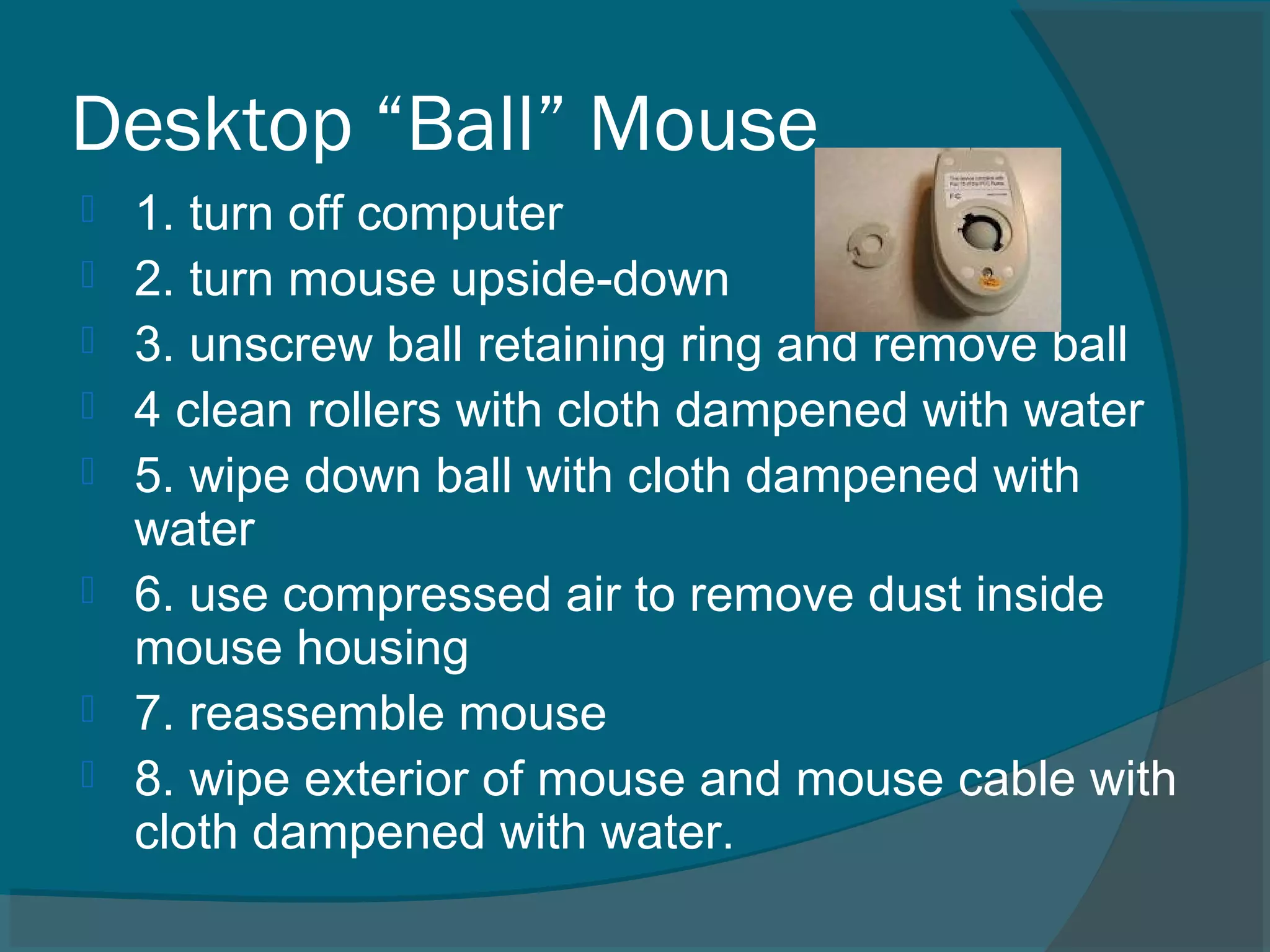This document provides guidance on performing preventative maintenance on a computer to improve performance and extend its lifespan. It recommends cleaning the external components like the monitor, keyboard, and mouse regularly, as dust can accumulate quickly. Internally, it suggests using the Disk Cleanup and Disk Defragmenter tools periodically to free up hard drive space and optimize file placement. It also stresses the importance of installing operating system and software updates, scanning for viruses regularly, and backing up files in case of hardware failure or malware infection. Regular maintenance through cleaning, optimization, and backup is presented as an effective way to care for a computer over time.








